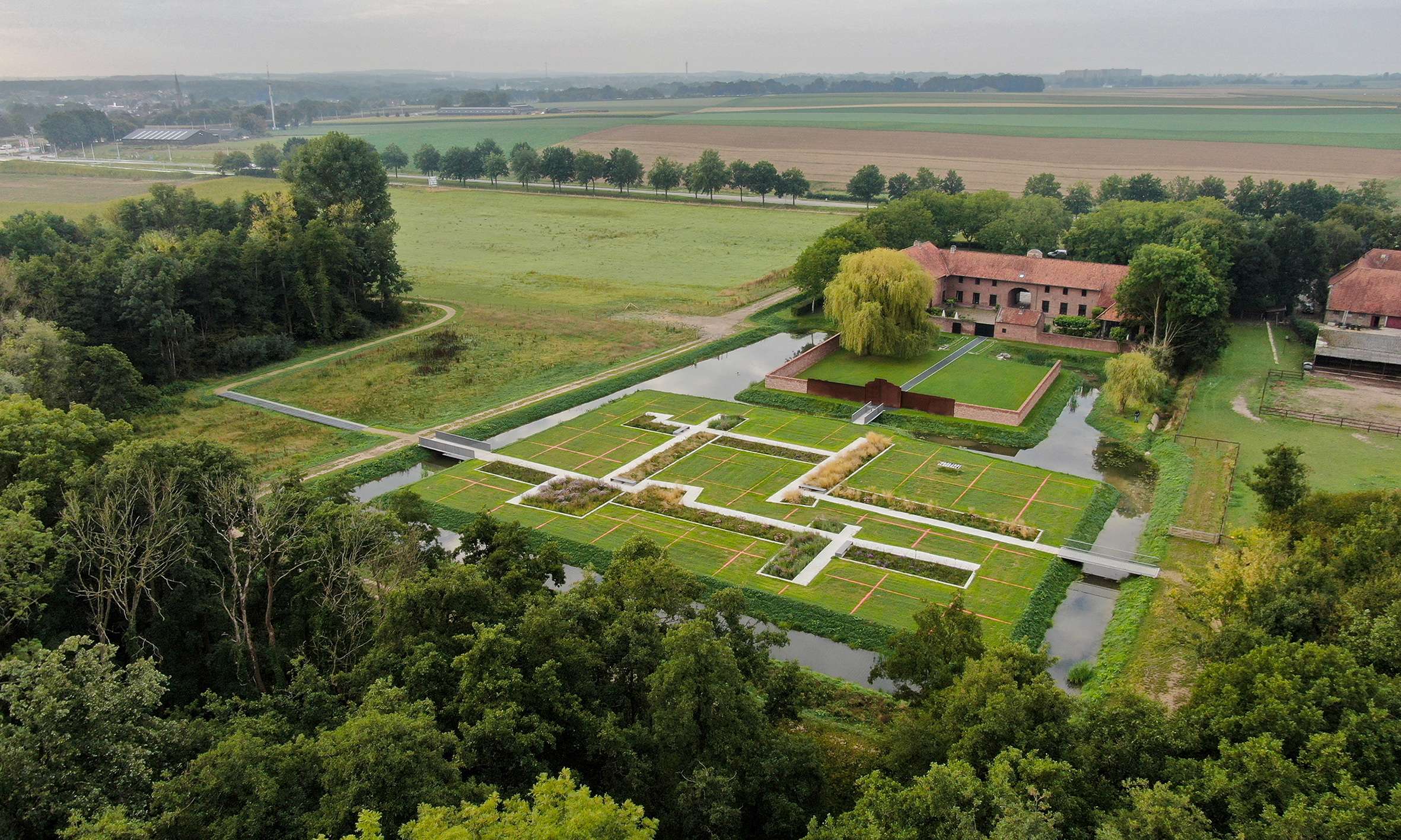
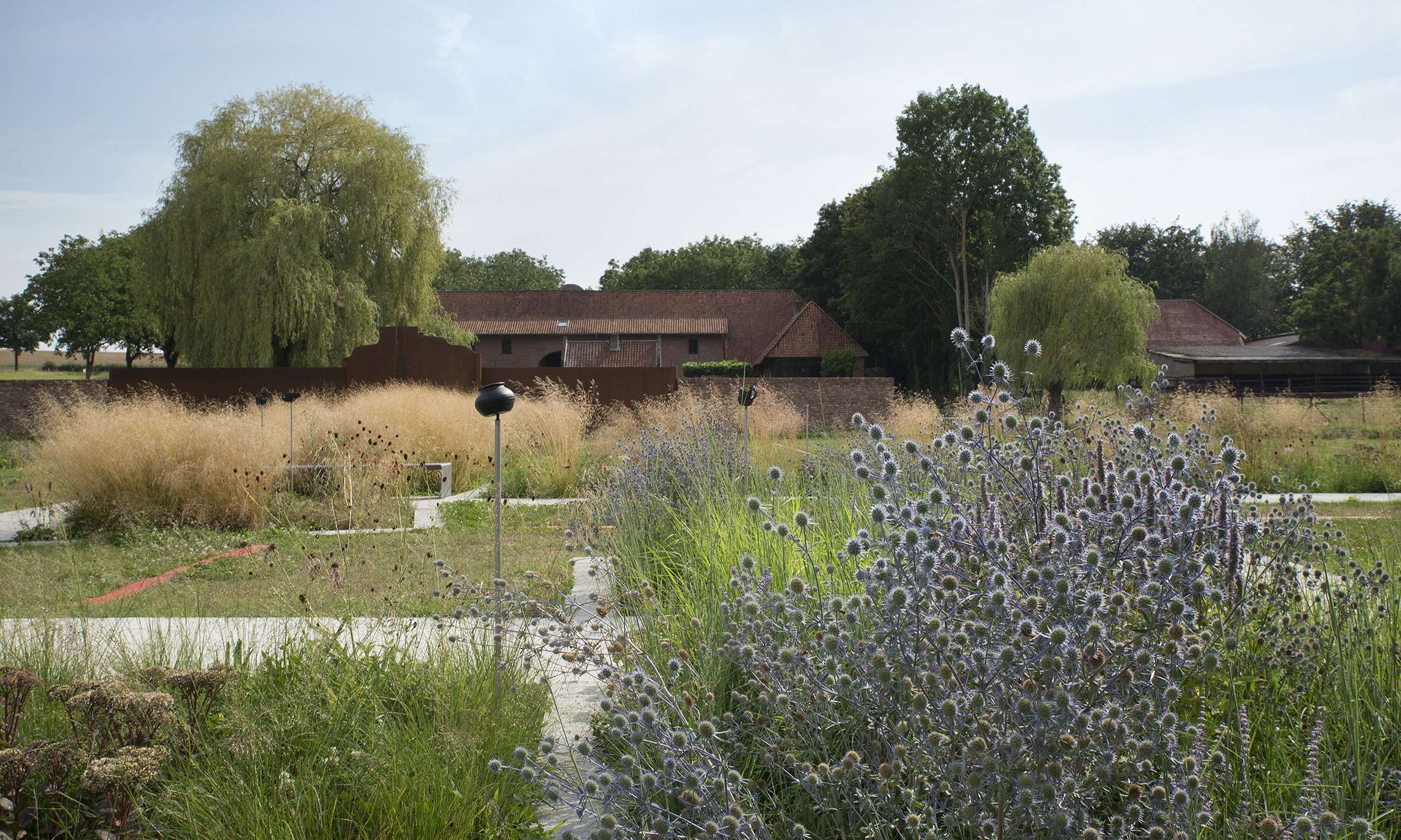


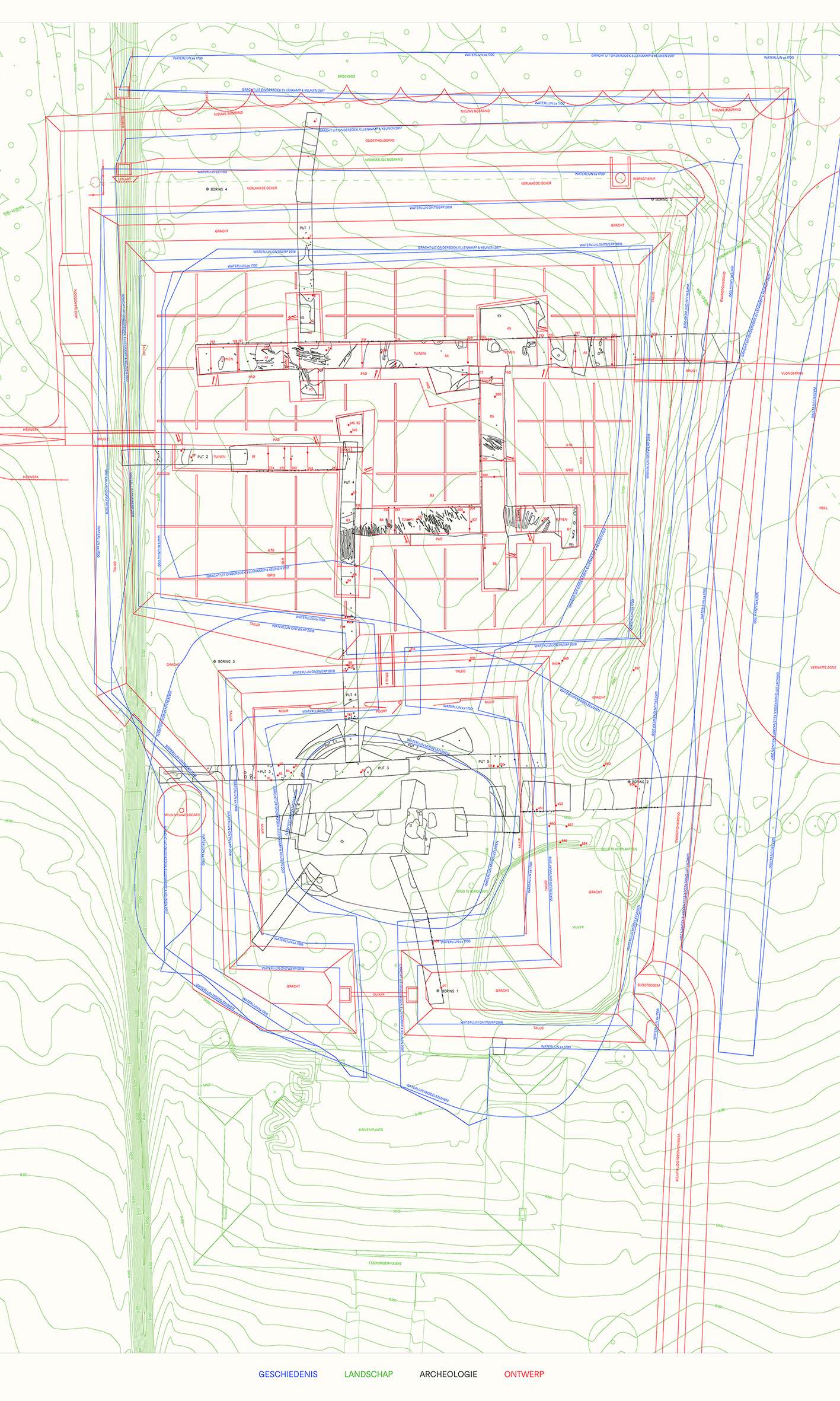
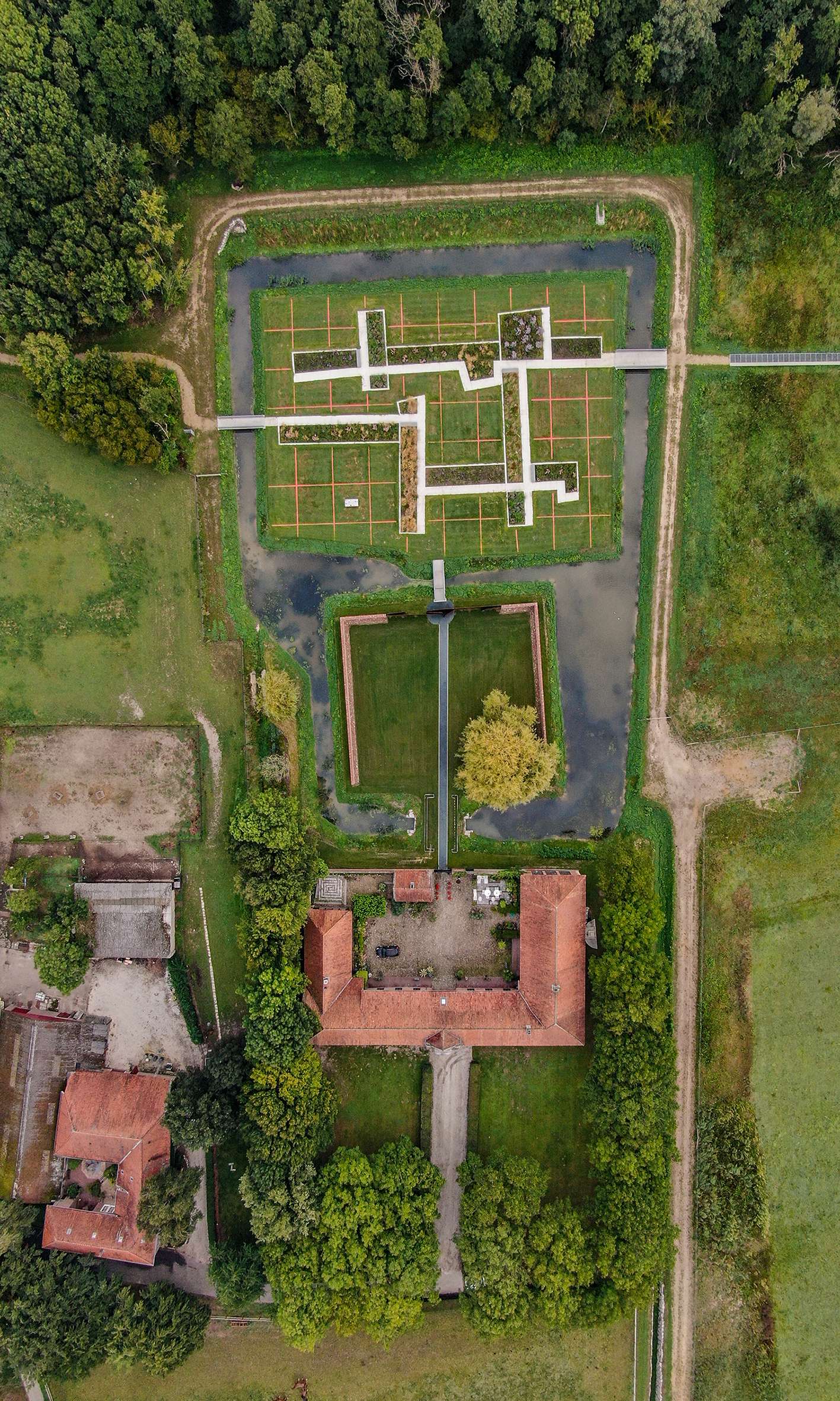
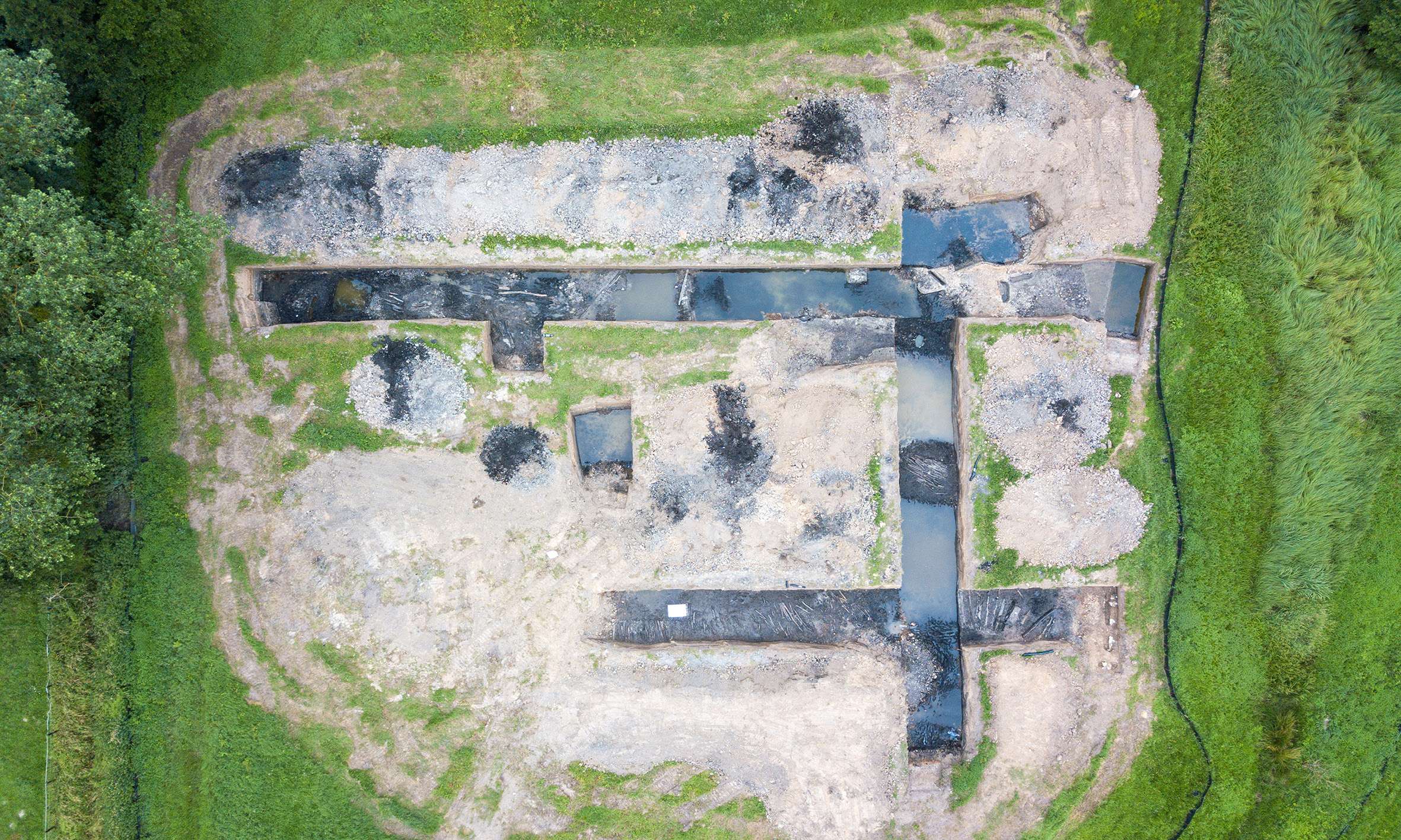
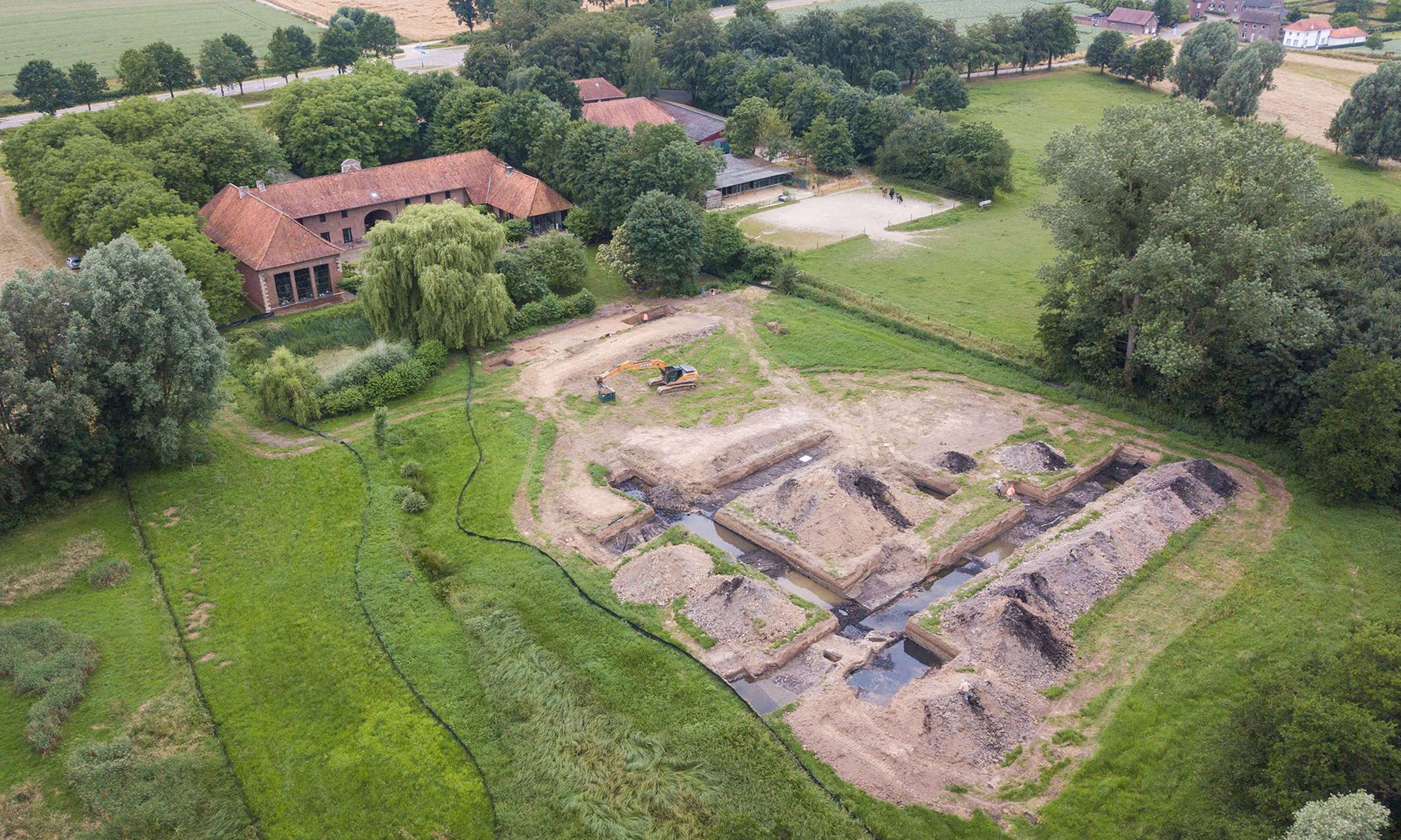
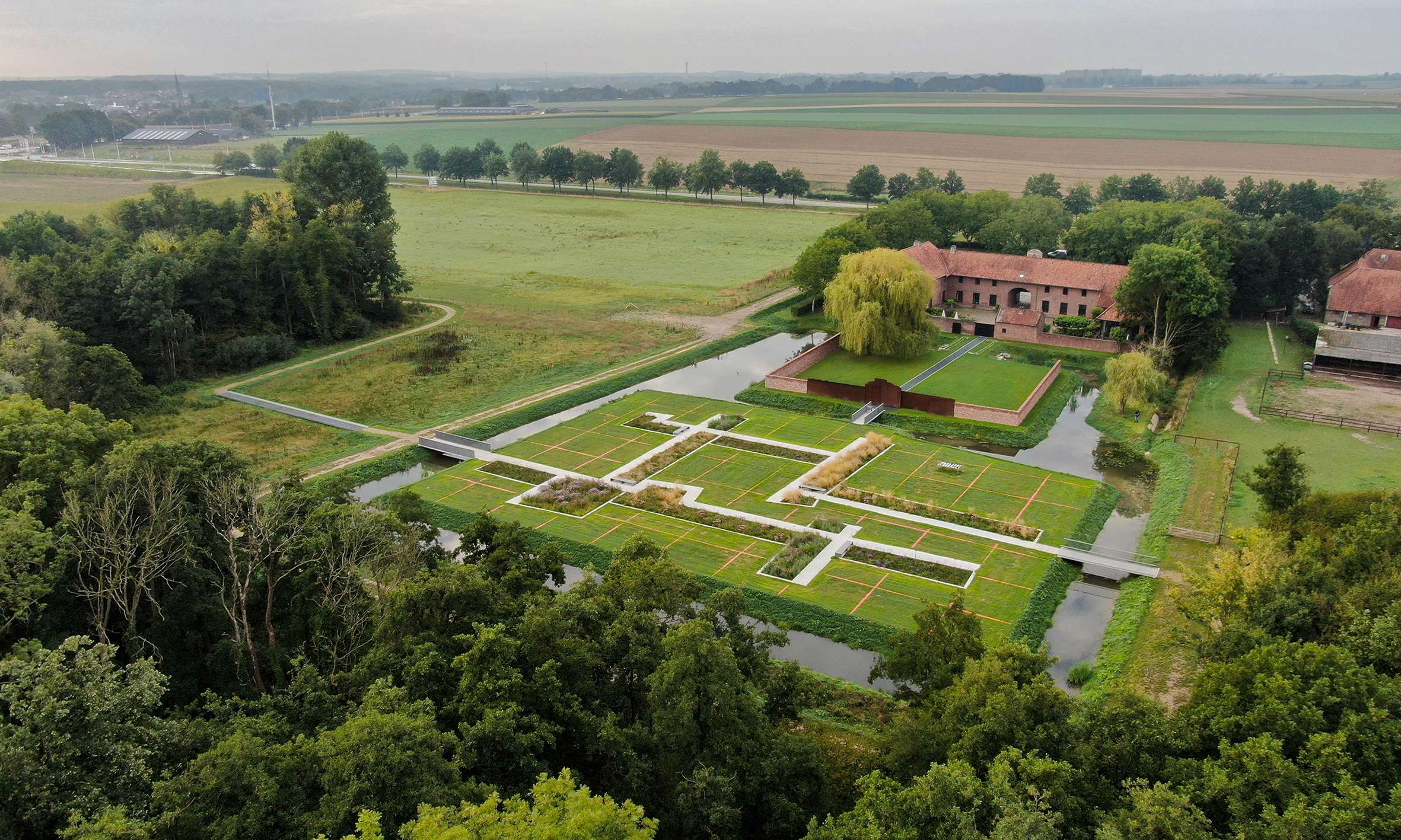
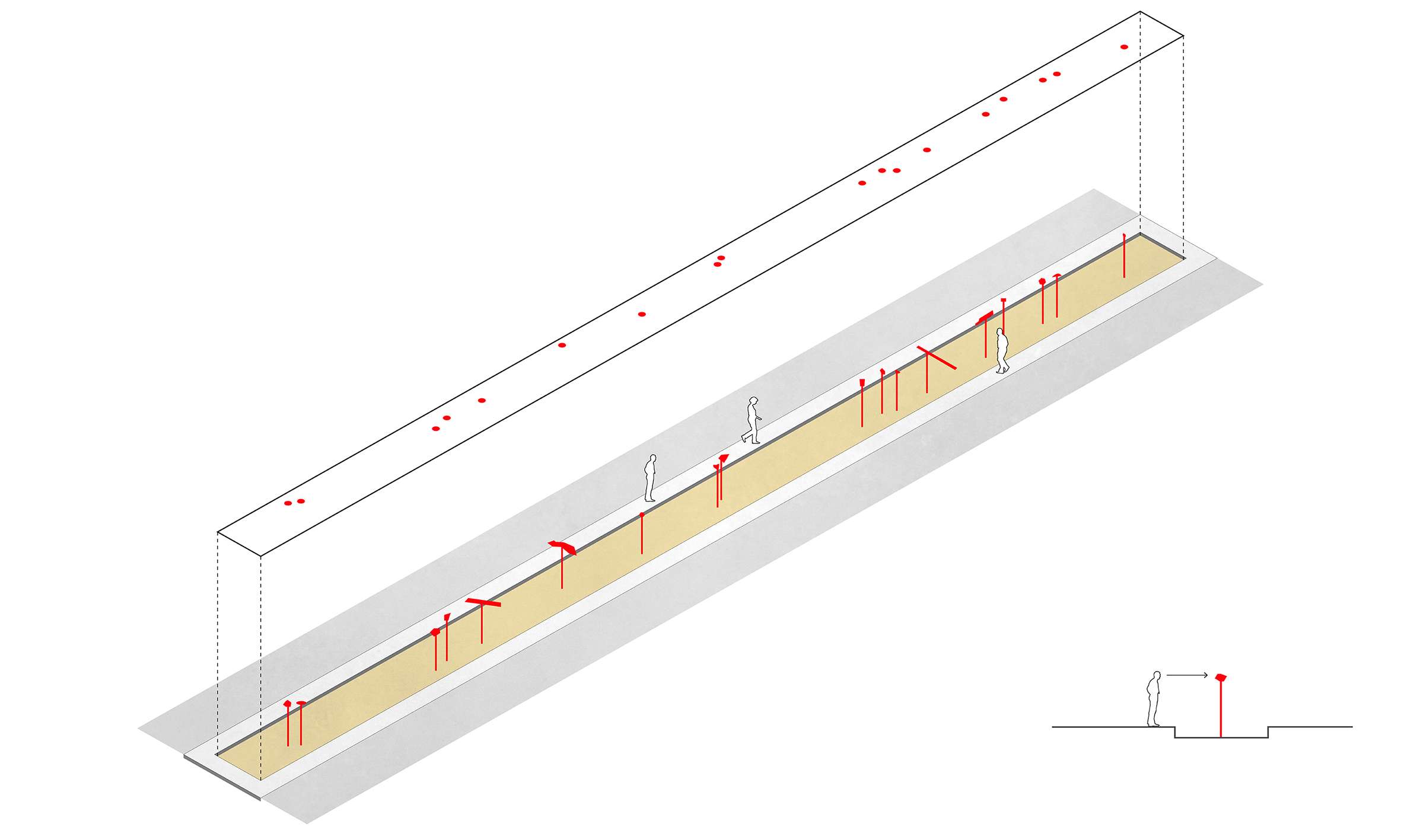
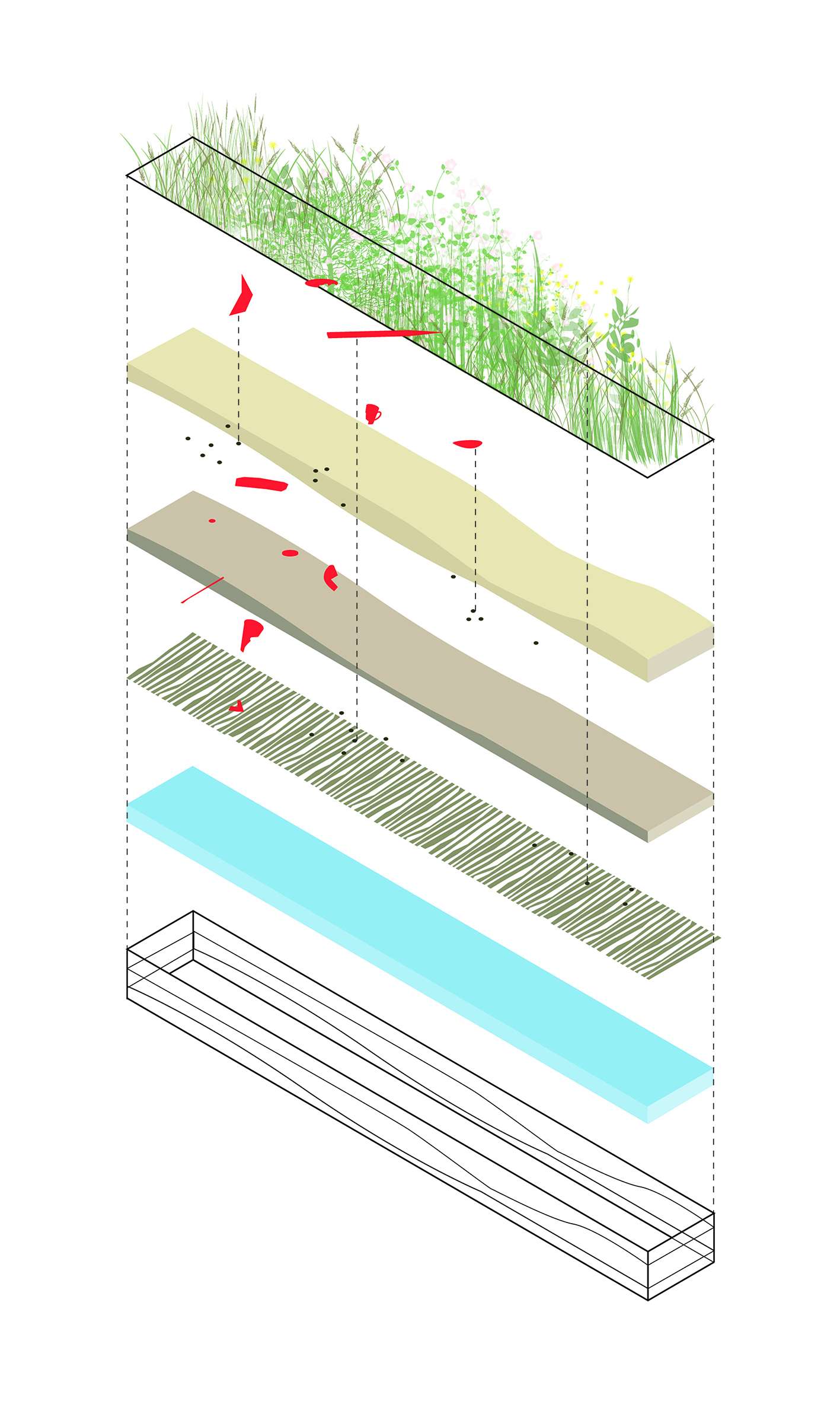
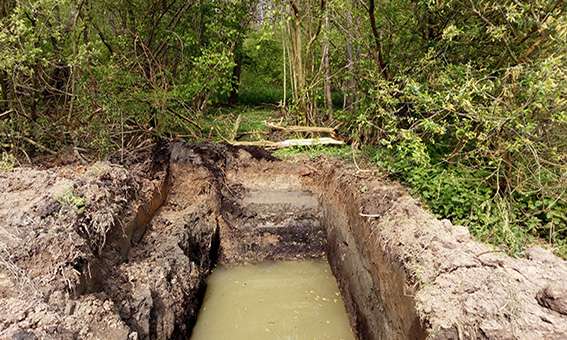

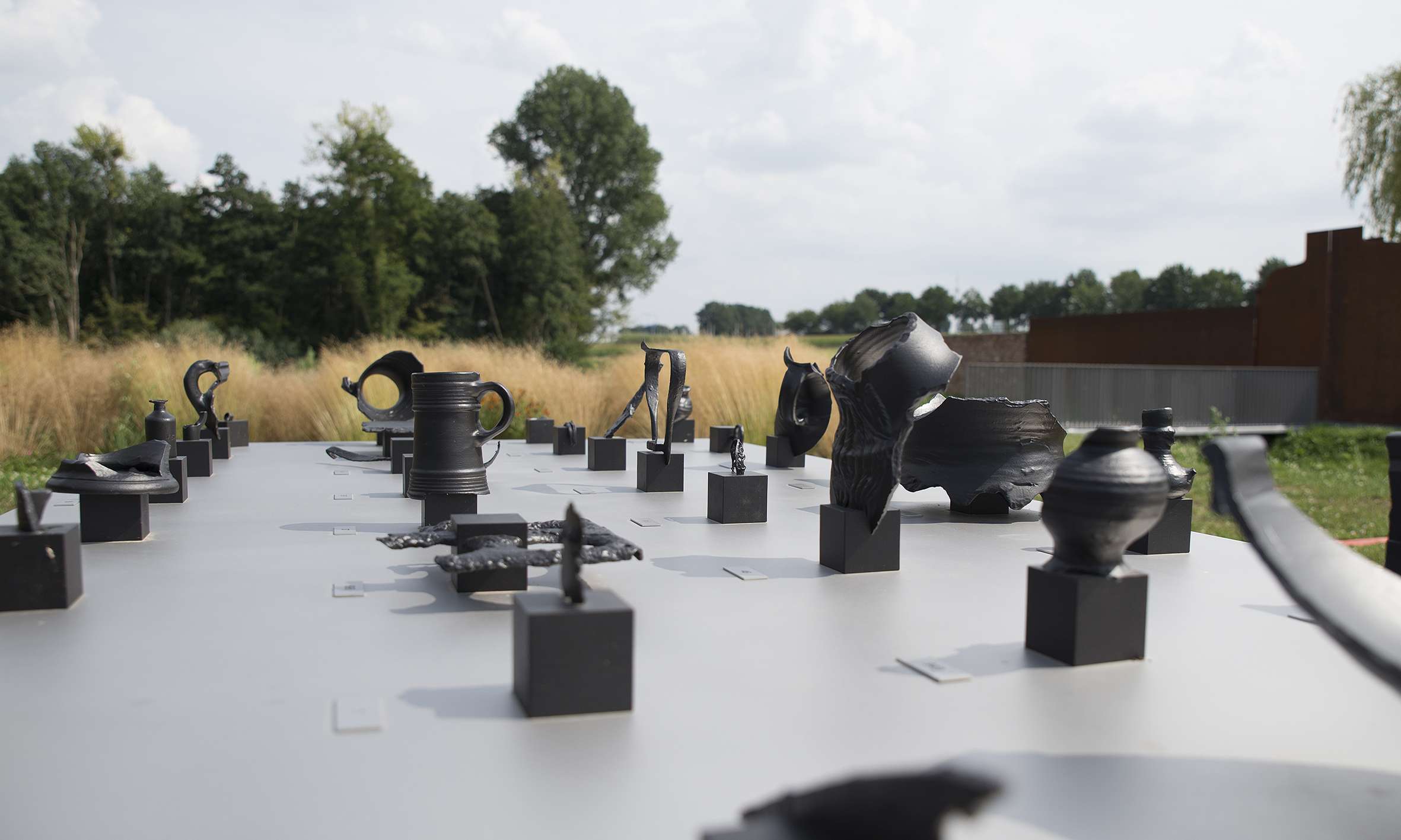
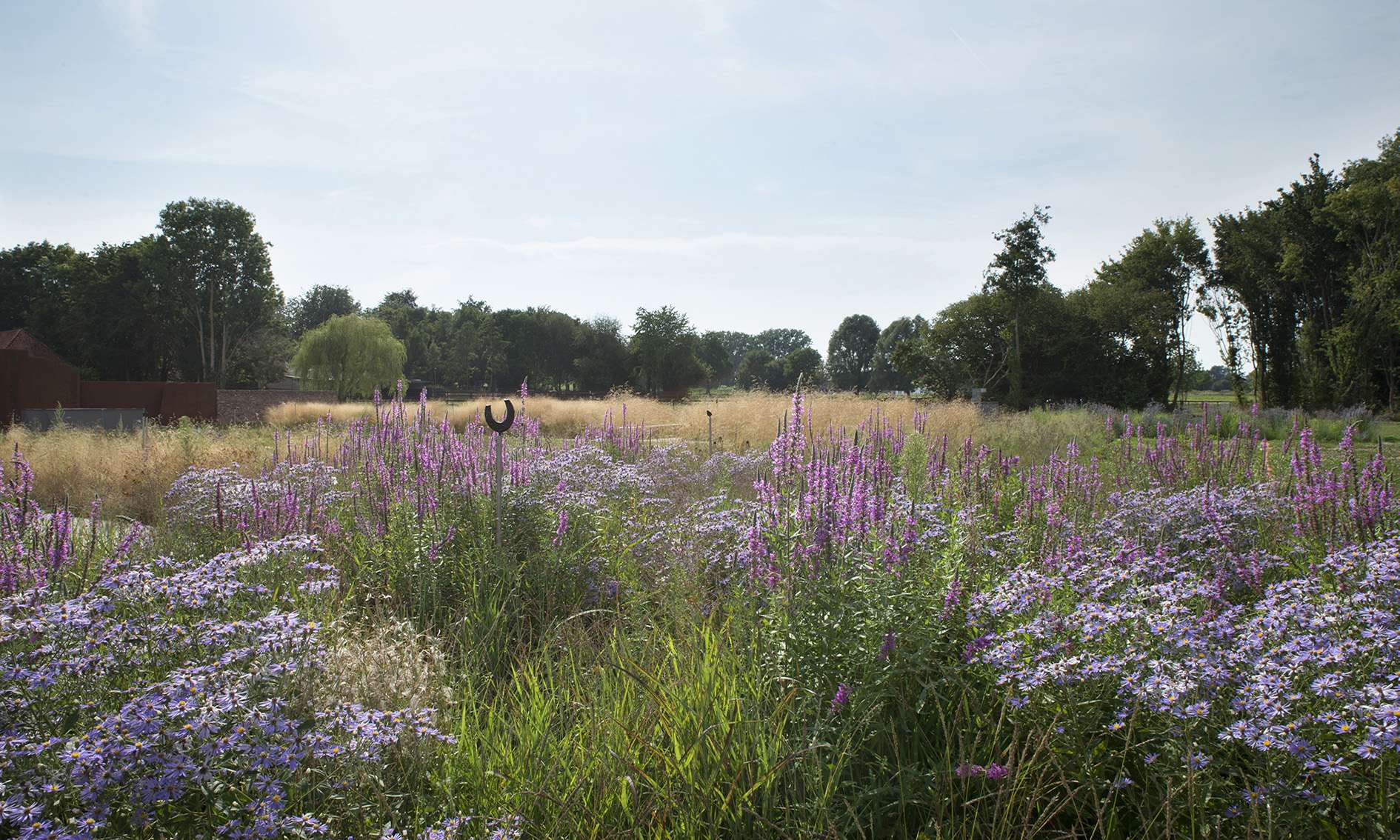
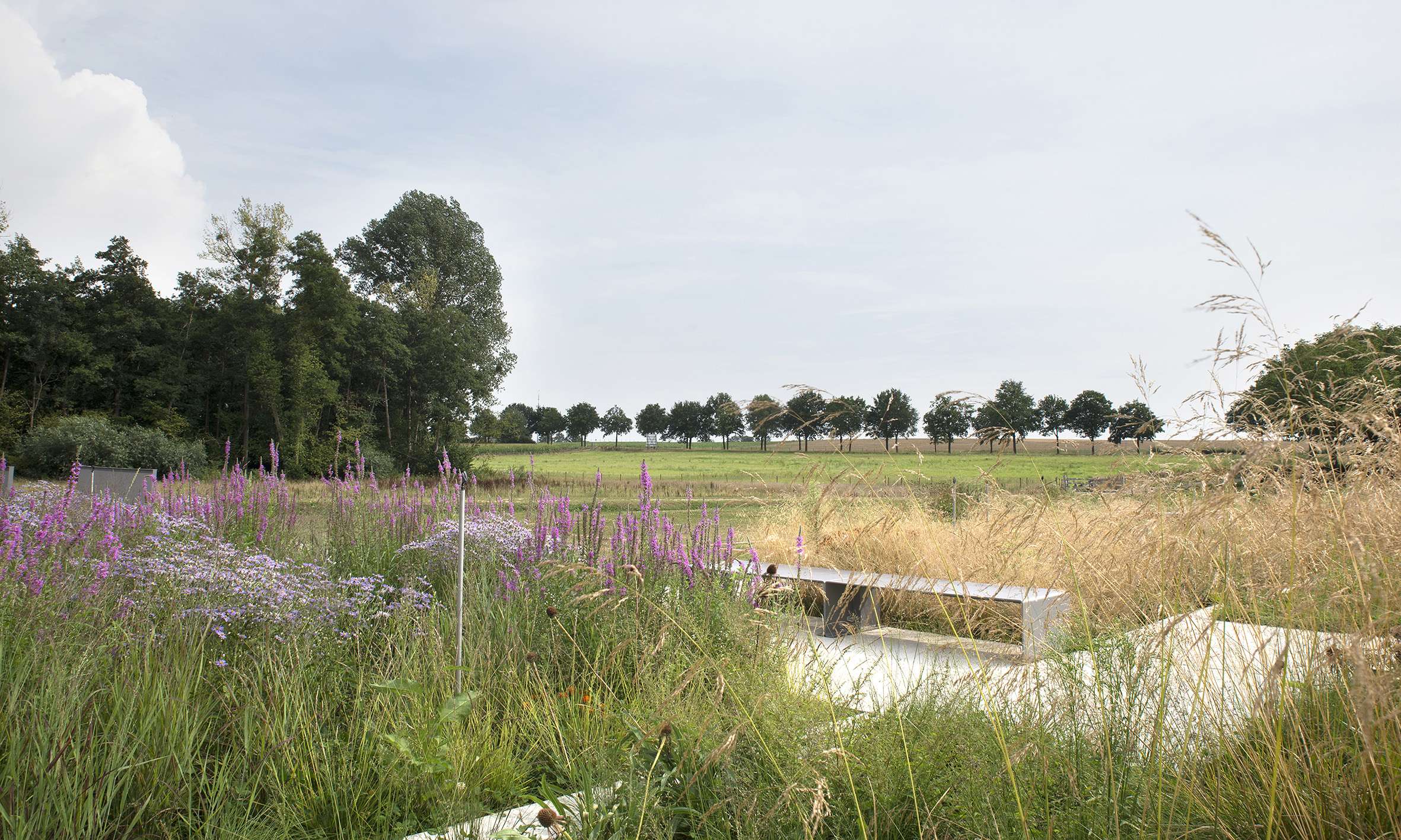
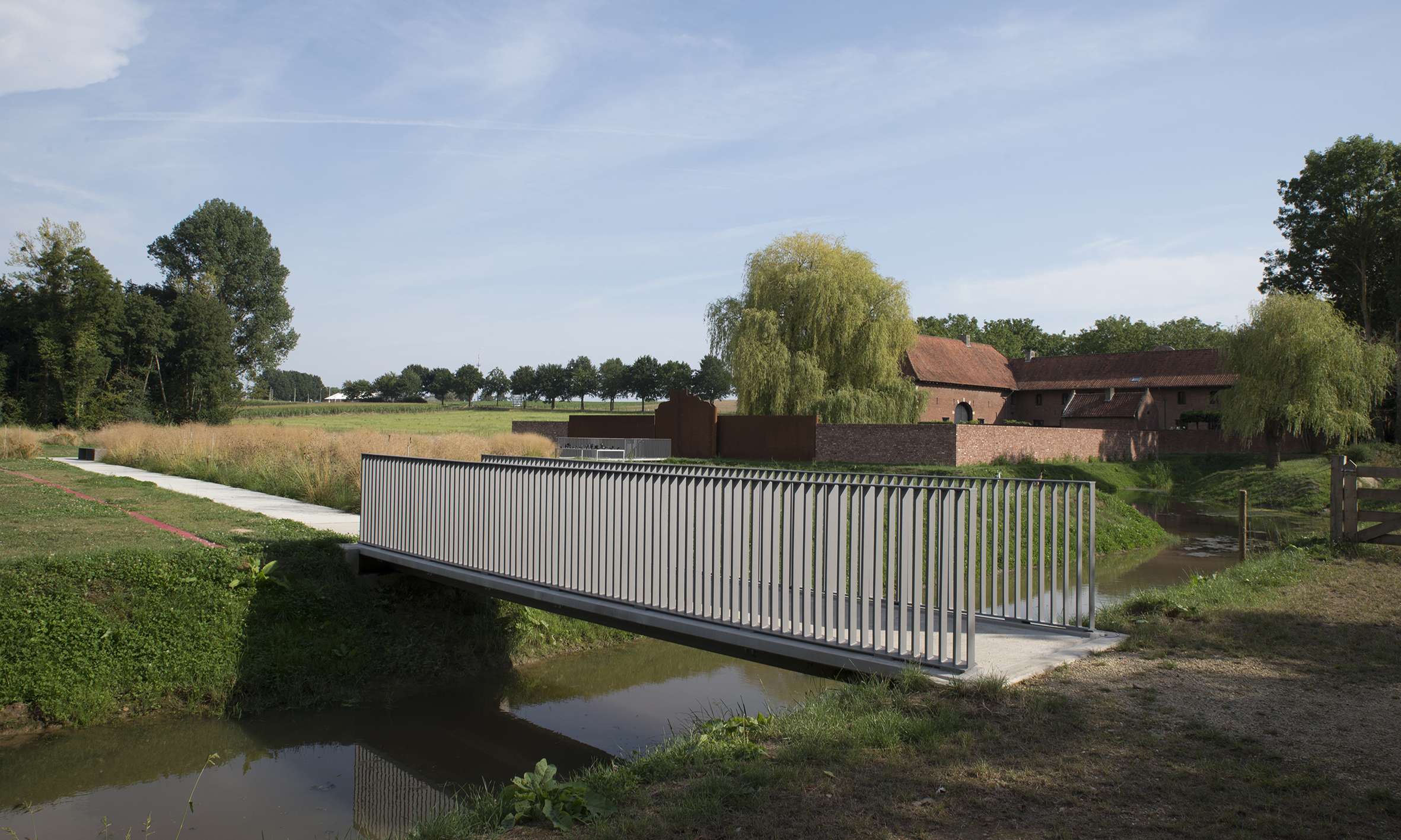
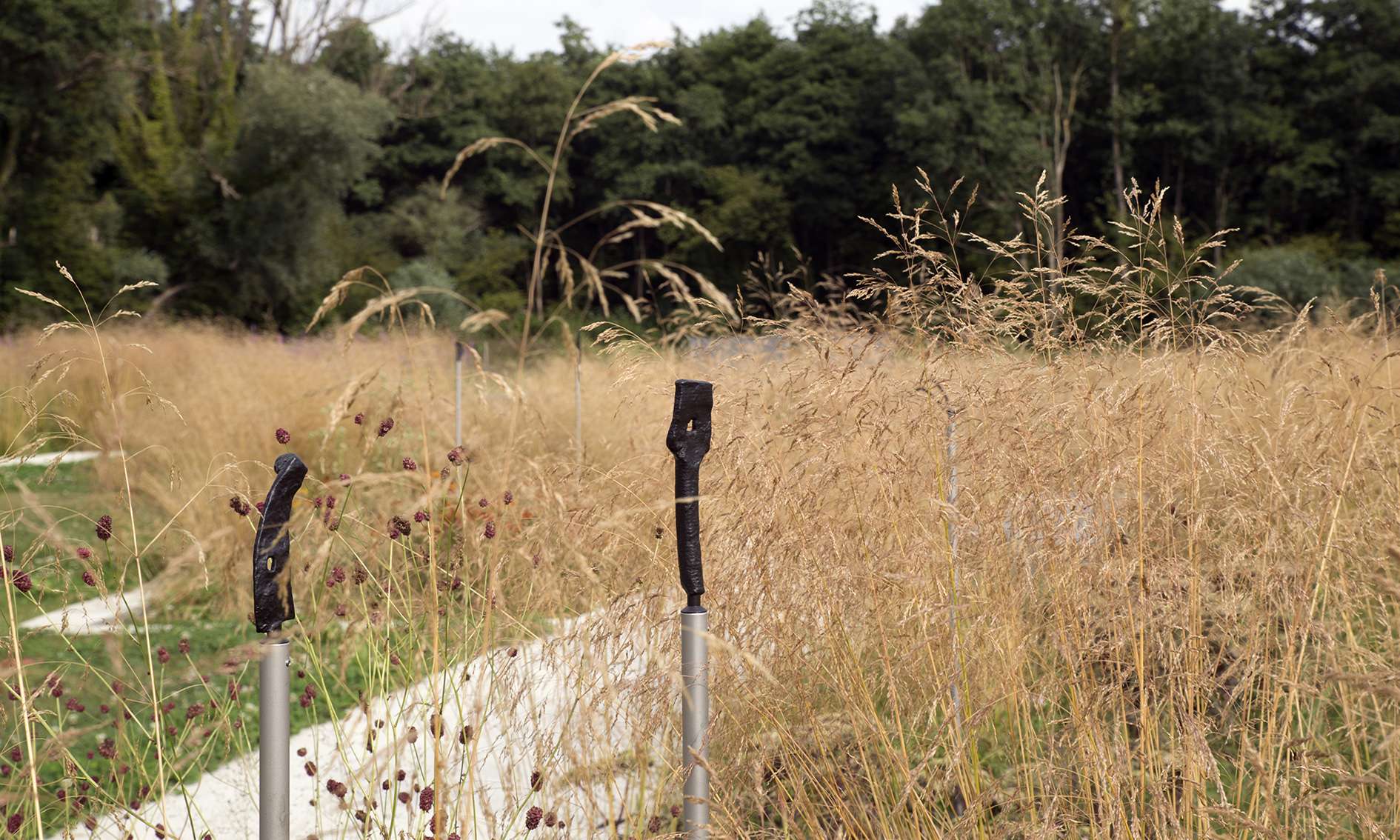
Jardín del castillo de Etzenrade
Jardí del castell d'Etzenrade
Etzenrade Castle Garden
The ‘Etzenrader Huisken’, is a national and provincial monumental building with a unique garden that tells the hidden history of South-Limburg. LOLA Landscape Architects and garden designer Piet Oudolf designed a public 'archaeology garden' between a monumental farmstead and a forested river valley, that reveals fragments of the hidden history of Etzenrade in South-Limburg.
In the garden behind the farmstead, old canals stand out in the landscape. These were once the canals of ‘Etzenrade Castle’, which were extended at a later stage and formed part of the gardens behind the Etzenrader Huisken. It is likely that the old farmhouse is constructed from materials of the 13th century Etzenrade Castle, which was demolished or destroyed in the 18th Century. The castle was located in a marshy area south from the Rode Beek (red brook) and was surrounded by canals.
Archaeological research was essential in this landscape design project. In the new garden, the history of the area is accurately brought up and presented to the visitor. Little is left of the old castle, but the canals where reconstructed by means of soil research and trial trenches. The canals are excavated and now used as a natural water buffer. The location of the trial trenches are now the planting beds, that are guided by concrete foothpaths. The trial trenches are used as a central museum park element and stay visible even though they are filled up again.
Replicas of the most extraordinary artifacts unearthed during the archaeological investigation, are displayed in the gardens at the exact location they were found. Like sculptures amidst the planting. The artifacts tell about the history of the site from the Full Middle Ages to the present day: household objects of the inhabitants, bones of the cattle that grazed at the site and armor of knights who defended the area, and even weapon remains from the Second World War.
Since the opening the LOLA designed Etzenrade Castle garden has become a popular destination for walkers and garden lovers, not only from the Netherlands, but also from nearby Belgium and Germany. The public garden and landscape design are part of a bigger plan for the surroundings in which the Rode Beek is upgraded for ecological and recreational purposes, to create more water storage, to contribute to nature development and to improve the accessibility of the area.
Project website: www.lola.land/project/etzenrade-castle
Compliance with the UN Sustainable Development Goals:
SDG goal 3: Good health and well-being
- Etzenrade Castle garden officially opened in September 2021 and has become a popular destination for hikers and garden lovers. Via semi-paved paths from Kneijkuilerweg in the south and Bredestraat in the west, the new public garden is not only open to visitors from the Netherlands, but also from nearby Belgium and Germany.
SDG goal 13: Climate action
- The public garden and landscape design are part of a bigger plan for the surroundings in which the Rode Beek is upgraded for ecological and recreational purposes, to create more water storage, to contribute to nature development and to improve the accessibility of the area.
- In the garden behind the farmstead, old canals stand out in the landscape. These were once the canals of ‘Etzenrade Castle’. The former castle stood in a swampy area, surrounded by canals that were fed by the numerous springs in and by the Rode Beek.
- Over the past years, the Limburg area has developed a reputation for flooding problems. In 2019, the Etzenrade Castle canals were re-excavated and now function as a natural water buffer for runoff water from the surrounding hills.
SDG goal 15: Life on land
- LOLA Landscape Architects and Piet Oudolf designed a public 'archaeology garden' to make the history of Etzenrade visible again and to restore the old function of the location.
- Little is left of the old castle, but the canals where reconstructed by means of soil research and trial trenches.
- The garden is designed to support biodiversity and is at the same time once again used for water retention.
- The castle walls of the past have made way for flowers and grass that attract insects, birds and other animals.
- Five borders have been created across the grid of the old trenches, each with one dominant grass species, such as Deschampsia, Sporobolus and Molinia.
